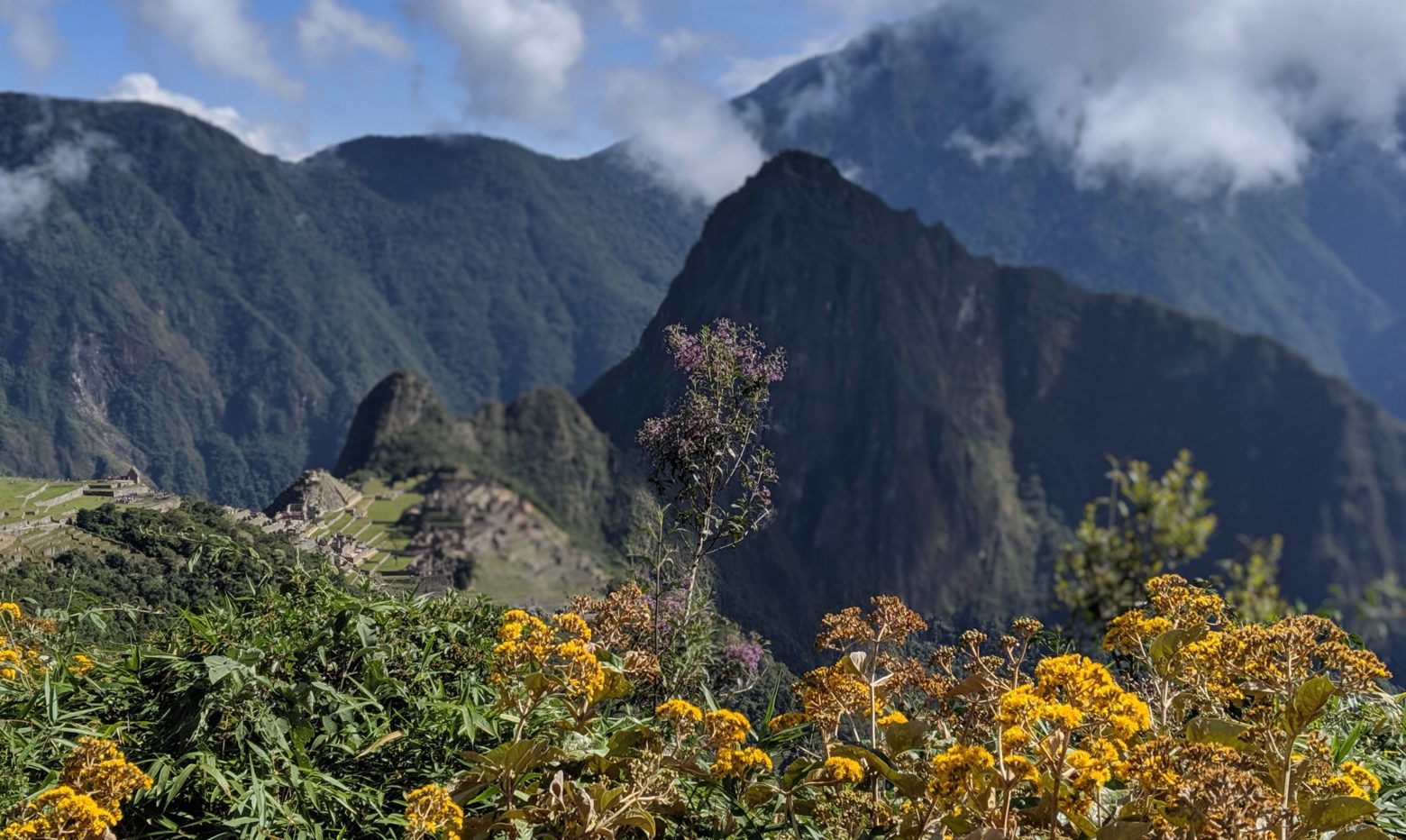The first part of our trip to Peru took us to Lima for three days. If you missed it, you can read about it here!
After an early flight from Lima to Cusco, we hopped in a taxi for a two-hour drive to Ollantaytambo, a small town in the mountains between Cusco and Machu Picchu. Ollantaytambo, Machu Picchu and Cusco are all part of the Sacred Valley region.
Two Days in Ollantaytambo
The travel books and blogs I read recommended staying in Ollantaytambo for two reasons: To better adjust to the altitude before Cusco (since Cusco is more than 11,000 feet above sea level and Ollantaytambo is a mere 9,160) and to stay in a beautiful setting and relax away from the city.
Ollantaytambo was a nice little town, as promised, and neither of us experienced altitude sickness during the trip, so that worked out. However, clearly the people who wrote that Ollantaytambo was tranquil never visited during the Festival del Señor de Choquekillka, and were never woken up by a marching band walking past their hotel at 6 a.m.! This festival was celebrating the Catholic holiday of Pentecost, but in a way I’ve never seen Catholics celebrate before. In a mix of Catholic and Incan tradition, this festival involved countless parades of people dressed up in colorful, shiny costumes and masks, accompanied by marching bands, dancing through the streets to a stage in the town’s main plaza. The celebration brought in a lot of locals from the surrounding towns.

While we could have gone without getting woken up by a marching band, it was definitely an interesting thing to experience. Ollantaytambo also has a lot of tourist infrastructure (to put it nicely), and I think the festival was one of the few things we saw there that wasn’t geared toward tourists.
Besides the festival, we also got a preview of Machu Picchu with some Incan ruins. The afternoon we arrived, we explored an old fortress built into the side of the mountain. The next morning, we hiked up the opposite mountain to some Incan grain storehouses, and got a good view of the ruins we had visited the day before. It also gave us a good view of the town, which dates back to Inca times and even pre-Inca times, in some parts.
We also had lunch at a little place called Heart’s Cafe, which had a bunch of veggie options and as an added bonus, donates part of its money to a children’s nonprofit.

That afternoon, we caught our PeruRail train to Aguas Calientes (also called Machu Picchu Pueblo), the town at the base of Machu Picchu. Train is the way most tourists arrive (if they’re not hiking there for days via the Inca trail). It was a beautiful ride, and the train had skylights so you could see the scenery even better.
Agua Calientes solely exists for tourists to stay the night before (like we did) or after seeing Machu Picchu, but it has a nice jungle-like setting at the base of mountain where Machu Picchu is.
The Main Event: Machu Picchu
Machu Picchu was built by the Incas in the 1400s, at nearly 8,000 feet above sea level. Not a lot is known about it because the Incas didn’t have a written language. In fact, no one is exactly sure what it was used for, but it’s thought to have been a royal estate. Even during our short stay in Peru, we heard tons of conflicting information about it and the Incas in general, because of this lack of writing.
Machu Picchu has an agricultural section with terraces for farming built into the side of the mountain and an urban section with temples and buildings. The Spanish conquistadors never found it, so it wasn’t destroyed like many other Incan buildings.
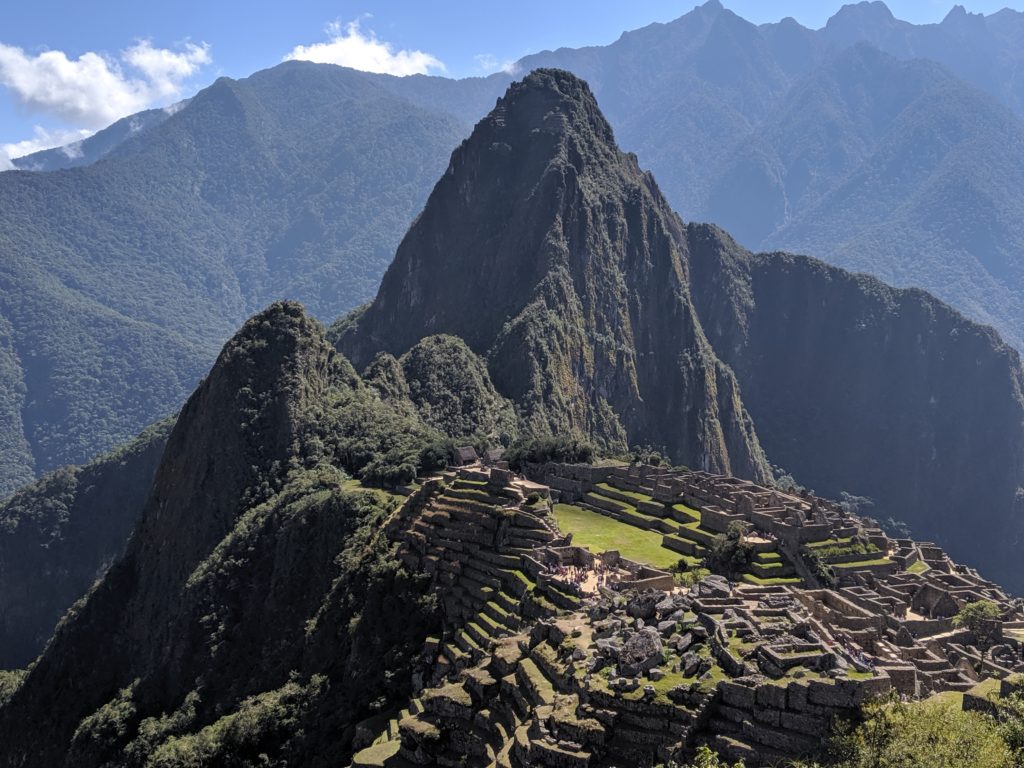
Getting Up for Sunrise
We got to Machu Picchu when it opened, bright and early at 6 a.m., so we could see the sunrise. It was one of the best parts of the day!
I didn’t fully realize this, but Machu Picchu sunrise isn’t your traditional, pretty colors phenomenon. At Machu Picchu, before sunrise, you’re in the upper part of the ruins complex, staring into gray clouds. You can’t tell that anything is there. At sunrise, you literally see the clouds slowly moving out of the way, and suddenly, in the dazzling sun, the ruins of Machu Picchu and mountain behind them appear. It was truly amazing. Luckily, we had hired a guide who told us we had to wait around to see this. Otherwise, we might not have known that’s what we were waiting for!
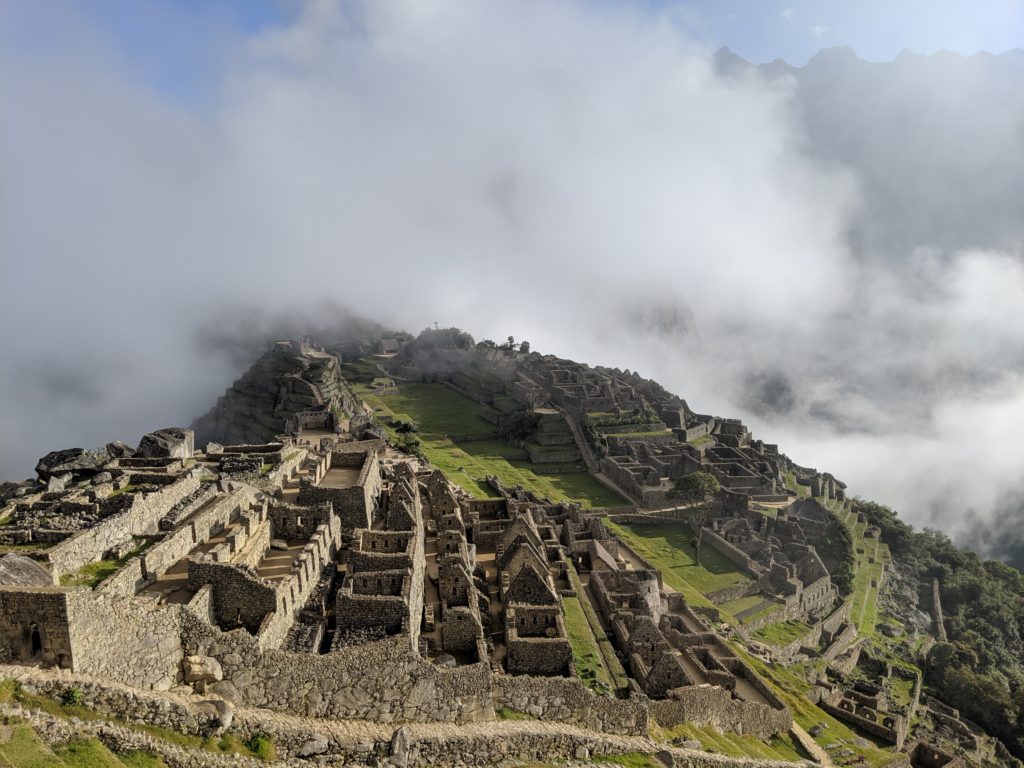
When I was researching tickets for Machu Picchu (which you buy for certain times), there were conflicting opinions online about when to go: Some people recommended getting there super early to see the sunrise and because it’s less crowded, and others said to go later because everyone goes early and the sunrise isn’t that great. But we were really happy we decided to go early. It was totally worth it to see the sunrise! Plus, it definitely was less crowded.
And, waking up at 4 a.m. didn’t feel so early, because the town’s whole business revolves around Machu Picchu. Our hotel served breakfast starting at 4:30 a.m., and stores were open by the time we lined up for the bus to go up the mountain to Machu Picchu at 5:15 a.m.
Hiking Up to the Sun Gate
After seeing the sunrise, we awkwardly decided to politely ditch our guide early and do a little 1.5-hour round-trip hike a bit up the mountain to the Sun Gate, which gives you an overhead view of Machu Picchu. This was totally worth it! The view really gives you an idea of the scale of the ruins.
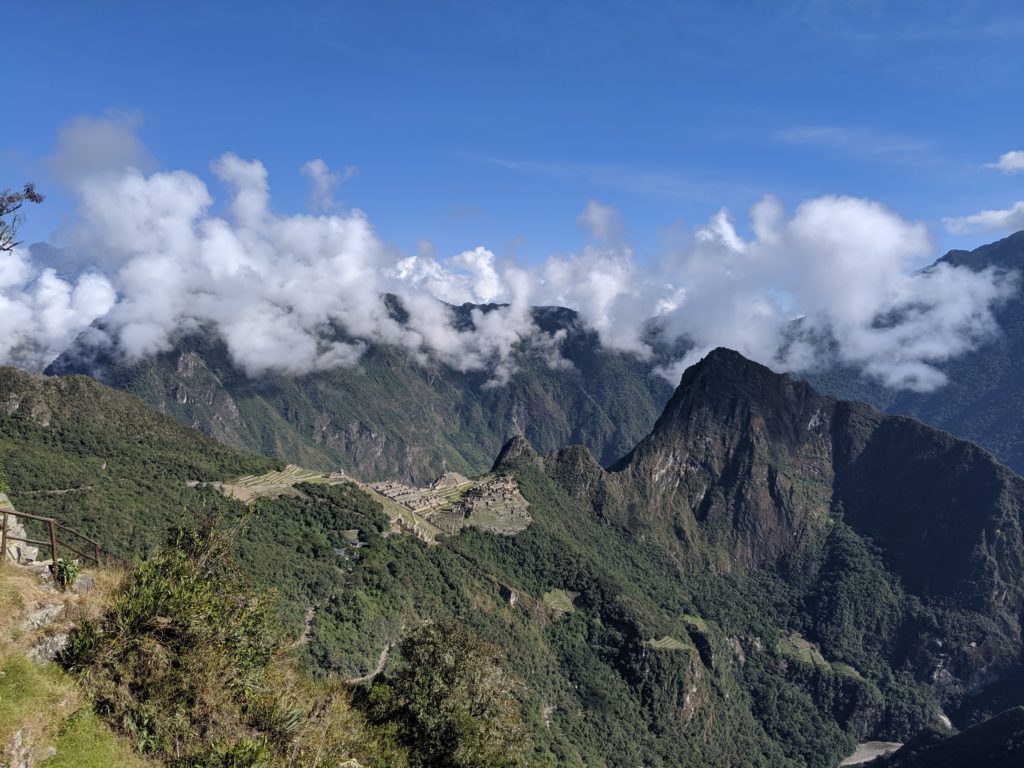
Then we went back down, said hi to some llamas and explored the ruins.
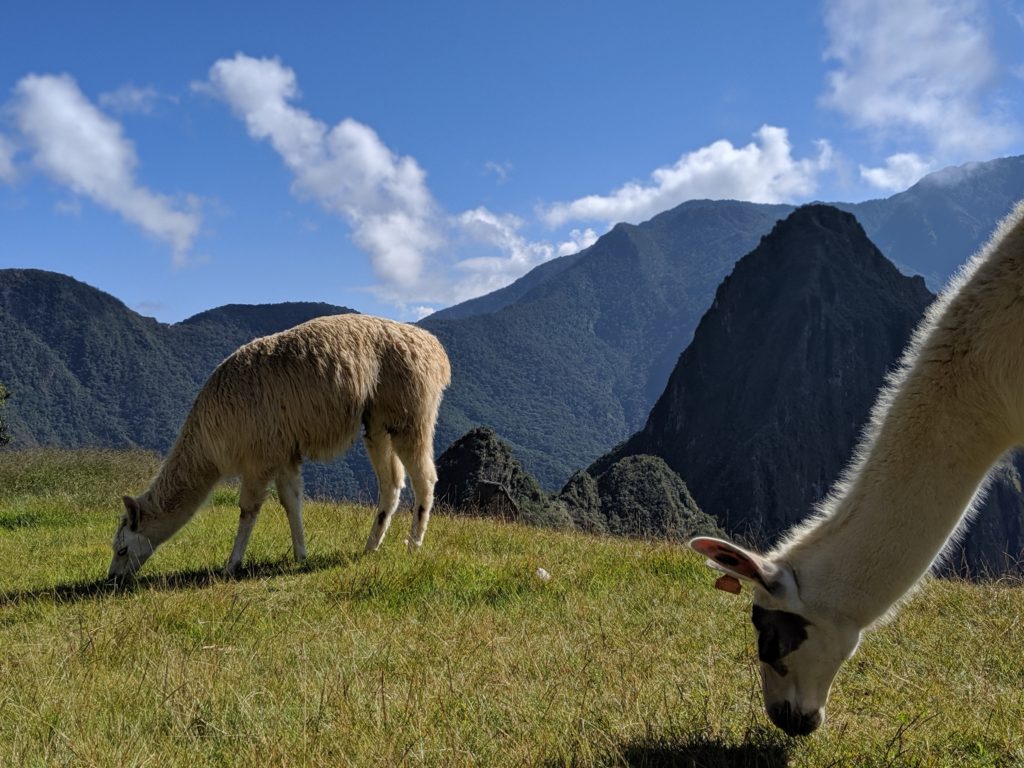
The ruins themselves are interesting, but to me, what really makes Machu Picchu amazing is the location, on top of this giant mountain in the jungle. I think it’s one of the most beautiful views I’ve had.

After getting back down to Aguas Calientes, we had some lunch and celebratory drinks and were off on the train again, this time all the way back to Cusco for the last leg of our trip!
